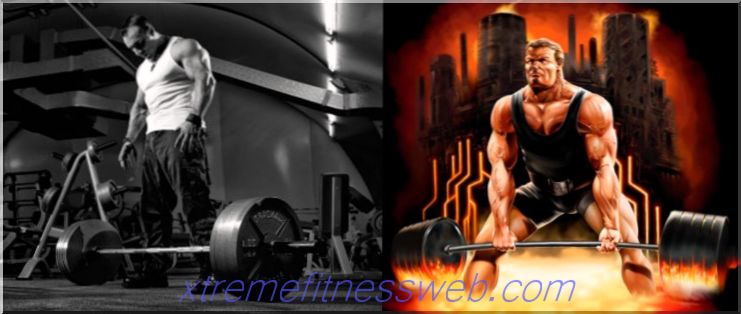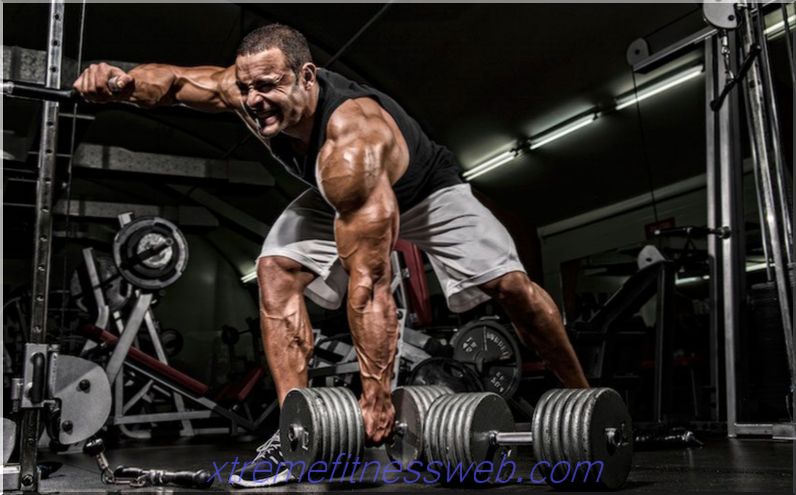
The bench press barbell is a complex exercise that came to us from weightlifting. Unlike the jerk and jerk, it is available to anyone who can squeeze the bar up in straight arms. The bench press is the rise up from shoulder level with a bench press. The schwung is performed from the level of the shoulders, the athlete includes the legs in the work, in contrast to the usual bench press. Due to this, more muscles are involved, and more significant weight can be raised. Shvungi are used both in power sports and in games for practicing explosive power. In fitness, they are used to diversify training, and to involve more muscle fibers in the work. Shvungi are useful both for the development of strength, and for those who want to lose weight.
Content
- 1 Technique
- 1.1 Starting position
- 1.2 Movement
- 1.3 Caution
- 2 Recommendations
- 3 Options
- 4 Analysis of exercises
- 4.1 What muscles work
- 4.2 Proper execution
- 4.3 Errors
- 4.4 Recommendations
- 4.5 Inclusion in the program
- 5 Contraindications
Execution technique

Starting position
- The bar is mounted on racks just below the athlete’s clavicle. It is important. The projectile should not be too high, and that the athlete was able to correctly remove it;
- The athlete takes a grip 10 cm wider than the neck of the neck, or 10 cm wider than his shoulders, if they are wide. The palms are mounted symmetrically on the neck;
- Then under the bar you need to step strictly in the center, and set it on the clavicle bones, grabbing it from below with your hands;
- The knees are bent, due to extension in the knee joint the bar is removed from the racks;
- The athlete moves away from the racks, that's all, he is ready to move, as soon as he aligns his position and stabilizes the body
Traffic
- The legs are slightly bent at the knees and sharply unbent;
- In proportion to the palms begin to move up;
- The inertia shell overcomes the dead center;
- The elbows are straightened;
- Hands carry out the boom of the projectile up and behind the head;
- The athlete fixes the barbell over his head;
- Then he bends the legs at the knees, and returns the barbell to the chest.
Attention
- The projectile cannot be pulled behind the back as in a jerk;
- No need to stop at eye level and so that the bar is projected onto the crown;
- You should not beat off the projectile from the chest and drop it sharply on the collarbone;
- If possible, use soft technique and do not insert the knees until they click;
- Avoid sharp movements of the wrists, and do not wring them at the top of the trajectory;
- Hip joints extend in direction of movement;
Recommendations

- The most important thing for a high-quality bench press is to maintain balance. The bar should move in one plane, an elliptical trajectory is allowed up, but not throwing behind the back. The athlete must keep the center of gravity, and not fall forward and backward;
- The feet are firmly on the ground, the socks can be slightly deployed to the sides, the center of gravity is about the middle of the arch of the foot;
- Sledding is performed so that the athlete can go into a full ride without breaking the movement. This is possible due to the fact that the knees diverge to the sides, to the middle toes, and do not fall forward;
- The movement of the legs occurs due to the extension of the knees, ankles and hip joints. It is necessary to strive to ensure that the movement of the bar is as smooth as possible, without jerking, tampering with hands and bouncing;
- Jumping at full foot to accelerate weight and lifting on the heels is allowed only if a person knows how to do this and his goal is to develop more explosive leg strength, rather than working out the shoulders
Execution Options

- You can make a barbell shvung from behind the head, this option is good for those people who have sufficient flexibility of the shoulder joint. In bodybuilding, it is generally accepted that such a schwung is more likely to work out the middle deltoid bundles. In weightlifting, movement is used to teach balancing with weight;
- Jolt shwung . It differs in that there is no phase of the boom of the projectile with his hands, as soon as the bar reaches eye level, the athlete goes under the bar, and pushes the weight upside down. This option is the most difficult technically in fitness, bodybuilding and crossfit.
Parsing exercise
The bench press is a special preparatory exercise from the arsenal of weightlifting. It teaches the athlete to push weight in straight arms. In this sport, both the technique described above and the bench press are used, as well as the jogging and shvung from behind the head. Shvungi work out the upper phase of the movement, the push from the collarbone.
What muscles work

Contrary to popular belief, shvungs load more than the middle delta, but the front and triceps, especially when it comes to the bench version. Therefore, some American power trainers consider the movement a suitable “back room” for the classic bench press in the high-speed version.
Almost all the muscles of the body — quadriceps and biceps of the hips and buttocks — work as “auxiliary” ones. Calf and soleus. During operation from the collarbone upwards, the press, latitudinal and trapezoid are included in the movement. If the grip is wide enough, it turns out to shift the focus to the middle delta.
Correct execution

- At the start of the forearm should be as close to the body, and the elbows are straightened so that the athlete has time to bring the body under the barbell. Elbow rotation should be avoided;
- Hands should be fully extended when the athlete holds the barbell over his head;
- Too long to stand with the shell at the top point should not be;
- Shvungi differ from bench presses in that they are carried out by accelerating the weight with your feet, and not in the power version;
- It is necessary to concentrate so that two-thirds of the way the bar passes by inertia, and only the doge was carried out by the front delta and triceps;
- Leg work should be fast, explosive;
- You need to think about your legs, as if you are going through the top of barbell squats;
- When pressing from the chest, the head is pulled back so as not to interfere with the projectile trajectory
Mistakes
- Too low foot power during work, lack of acceleration;
- The knees bend too much when lowering into the squat, the athlete tries to perform a full push, but with a barbell on his chest;
- Mixing a trust and a schwang. Shvungi are explosive, and trusts are a synchronous bench press, synchronized with the work of the legs;
- Hard reception of the neck of the chest;
- Projectile crawling on his stomach
Recommendations
- Too narrow grip is not recommended, that is, the position of the hands on the neck in which the palms are narrower than the shoulders;
- Hold the bar firmly and do not practice open grip;
- The projectile should be fixed on the front deltas, not lower;
- The bench press should not be performed from a jump, but from a full foot;
- Squatting is performed at a quarter of the squat amplitude, if the amplitude is deeper, the speed slows down;
- Legs that are not bent at the knees when lowering the bar do not absorb well and result in too high an impact load on the spine;
- In the negative phase, the elbows are not brought forward, and the bar falls through
Program Inclusion

In programs of bodybuilders aimed at hypertrophy, and in training crossfiters, the schwung can be included in multi-repetitive mode, for example, for 6-8 repetitions. In weightlifting programs, it is usually performed in the range of not more than 3 repetitions with a weight of not more than 70 percent of 1 PM.
Typically, this exercise is included in bodybuilder programs at least 1 time per week, possibly on the day of training the shoulders after training the bench press.
In the bench program, the exercise is included at the very end, in light mode and exclusively for speed training. In powerlifting, it is used exclusively during the off-season.
Contraindications
The movement is not recommended for any injuries to the shoulders, elbows, hands, fingers, hips and knees. It is not recommended for the period of recovery and rehabilitation, since it is extremely difficult to control the projectile in this exercise.
You should not perform the exercise and those who have problems with the spine - hernias, protrusions, curvature.
This exercise should be performed only with low weight, while the technique leaves much to be desired.







